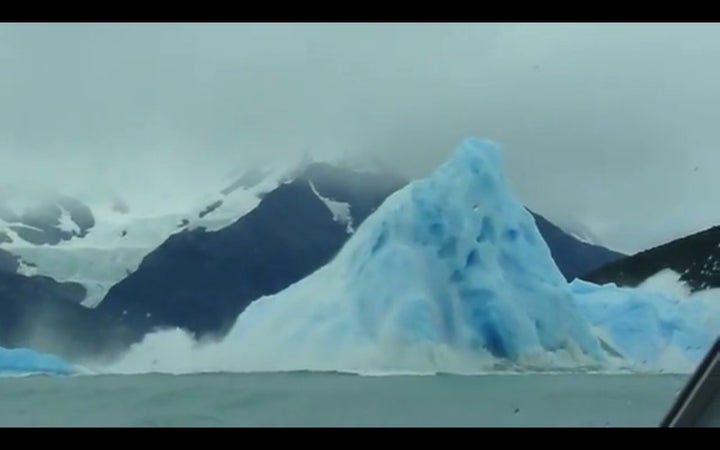
I recently returned from Glacier National Park. Audubon Society founder and Field and Forest editor George Bird Grinnell once called it "the crown of the continent" for its vast alpine landscapes and breathtaking beauty. And it truly has a majestic power, the kind of place that makes you wonder at the immensity and promise that is America. The park was so breathtaking that Railroad magnate James J. Hill built three grand, palatial hotels in it and mounted a national ad campaign for tourists who once traveled to the European Alps to "see America first" for an even grander sense of alpine beauty.
Glacier Park gets a lot of snow. Drifts are often 60 feet deep and can top 100 feet deep, and snow needs to be blasted with dynamite to break it up before plows can clear the roads in the spring. There's so much snow that the Many Glacier hotel is closed for the winter except a skeleton staff. A stuffed big horn sheep in the lobby is said to have fallen through the roof skylight, some fifty feet up, and the hotel was an inspiration for Stephen King's novel The Shining. This immense amount of snow -- and the retention and slow release of this winter precipitation long into the summer by glaciers -- is an important water source throughout the Western U.S.
When the park was established in 1910, it had 150 glaciers. This stunning collection drew tourists from all over America. Today there are just 25, and they are shrunken remnants of their former selves. The winter snow melts off so fast that it doesn't replenish them. At the current melt rate, these remaining holdouts are expected to be gone entirely some time between 2020 and 2030, after which point Glacier National park will have no glaciers.
Few places in the United States show the effects of climate change so starkly as these disappearing glaciers. The U.S. Geological Survey has undertaken a project of comparative photography, showing what many of Glacier National Park's glaciers once looked like, and what they look like now. Here are some examples:
Rising republican political star Teddy Roosevelt joined Grinnell to testify before a conservative-minded Congress and against the railroad lobby in order to protect Glacier and Yellowstone parks. Without their leadership, we would not have these vast treasures today.
Congress Fiddles
Would that the current leadership in Congress rose to the same level of quality. On August 1, 2012, Senator Barbara Boxer convened the first Senate hearing on climate change in some time. While Boxer was earnest and fact-based in her arguments, the committee's ranking member, Senator James Inhofe, a climate change denier, made a mockery of the process. Alabama's junior Senator Jefferson Beauregard "Jeff" Sessions III seemed unable even to grasp the concepts, and seemed to resort instead to ideological tribalism.
The entire video of the proceedings is worth watching in order to understand how the growing gap between advancing science and a democratic republic run by people untrained in science is causing a breakdown in our ability to solve modern problems. Most of these problems cut across partisan divides and require careful, thoughtful, and independent-minded analysis that follows the evidence to a well-reasoned conclusion. Sadly, that is nothing close to possible in the hyper-partisan climate in Congress, where even certain thoughts seem impermissible depending on which side of the aisle one sits.
Like 221 others in Congress, Sessions is an attorney. Like many attorneys who are trained in rhetorical argument, he seemed to have no clue about how to even begin to assess the evidence of science, presenting a chart and arguing that "in the last 10 years we've seen virtually no change" in the temperature. Inhofe appears to be so dug into his ideological position and the negative attention he gets from it that it is impossible for him to be skeptical, or anything but a true believer in contrarianism.
Their minority view was supported by the testimony of University of Alabama in Huntsville's John Christy, a contrarian climate scientist associated with the propagandist George C. Marshall Institute. In the middle of the hottest year ever recorded in the U.S. and what may be the worst drought since the dust bowl Christy made the argument that more CO2 in the atmosphere actually produces benefits, and "the most notable of these is the invigoration of plant life on which we and the rest of the animal world depend for food. CO2 is fundamentally plant food, and therefore our food." Midwest farmers, take note. Ignore the record temperatures and drought. This is an invigoration.
But beyond these ham-fisted and often Orwellian rhetorical arguments, for a true taste of the problems inherent in this discussion tune in to the exchange that happened as Boxer brought the first portion of the hearing to a close, beginning at 174:19 with a question from Senator John Boozman of Arkansas. Session had previously introduced a chart based on propaganda that shows, purportedly using NOAA data, that "since 1960, every single year they've had more record low temperatures than record high temperatures," and in closing Boxer introduced a chart from NOAA, based on peer-reviewed temperature measurements that "directly refutes Senator Sessions' chart" that shows "that since 1990 there have been more record highs than there have been record lows all the way to the present."
"We can look at both of those," Boxer said, "and see which one we agree with." And therein lies the problem.
Shawn Lawrence Otto is an author and science advocate. He is cofounder and CEO of ScienceDebate.org. Get his new book: Fool Me Twice: Fighting the Assault on Science in America,"One of the most important books written in America in the last decade." Starred Kirkus Review; Starred Publishers Weekly review. He is also a screenwriter and co-producer of the movie House of Sand and Fog. Visit him at http://www.shawnotto.com. Like him on Facebook. Join ScienceDebate.org to get the presidential candidates to debate science.
